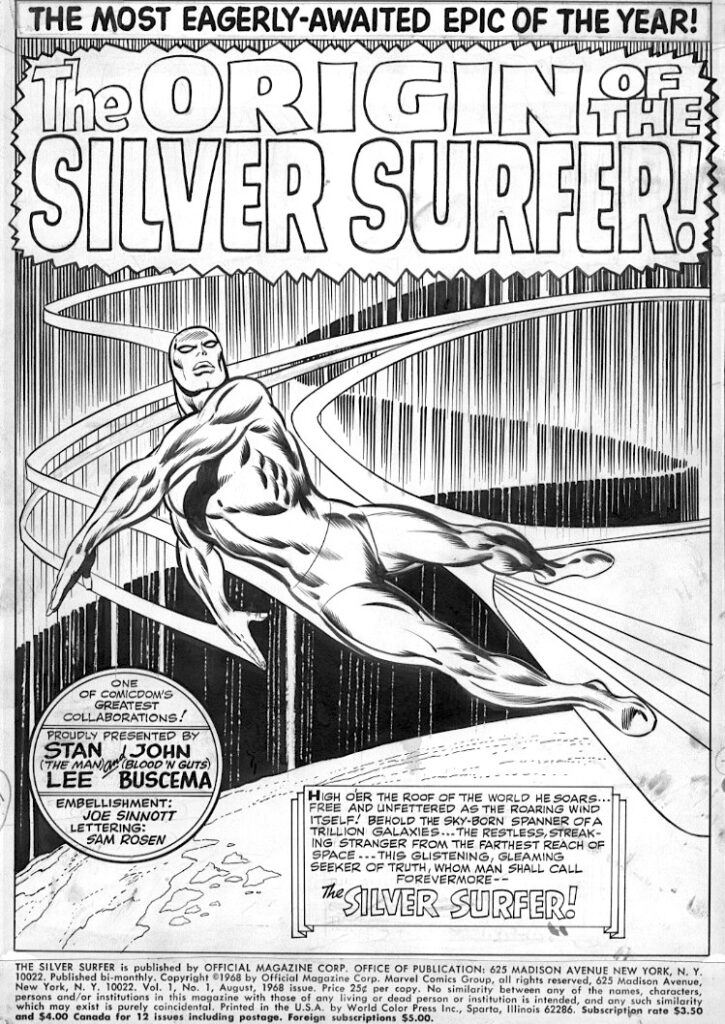
Vintage vs. Modern Art
Welcome! In this article I will talk about the differences in modern art and vintage. Why make a distinction? Comic art is comic art right? While there are certainly a very large amount of similarities, in many ways they are two separate markets and the collector bases and the art itself often have multiple fairly significant differences.
Things change slowly so it is impossible to pinpoint an exact year where the markets naturally diverge but I think for simplicity’s sake it is easiest to refer to pre-2000 art as vintage and 2000 to current art as modern. As the internet age rolled in to bring countless new forms of entertainment to kids, in the late 90’s to early 2000’s it also ushered in the digitizing of more and more comic production processes. At the same time several amazing stories hit the stand such as Hush, Ultimate Spider-Man, The Walking Dead and others that reinvigorated sequential art storytelling and ushered in a new golden age of quality comics that are more geared towards adults that still is thriving more and more to this very day. A newfound respect of modern art has taken place in the hobby and with that higher demand and higher prices. Jim Lee’s artwork is an excellent example to use in the vintage vs modern fracture as the nostalgic enchantment of his X-Men work is strong in the hobby, while his work on Hush not that long after is often appreciated as the pinnacle of his work, but I have never heard a collector attach the word nostalgia to the project once. Even more amazing is I know some collectors who have read one but not the other, which has always seemed crazy to me. How is this possible and what are the main things collectors should take note of?
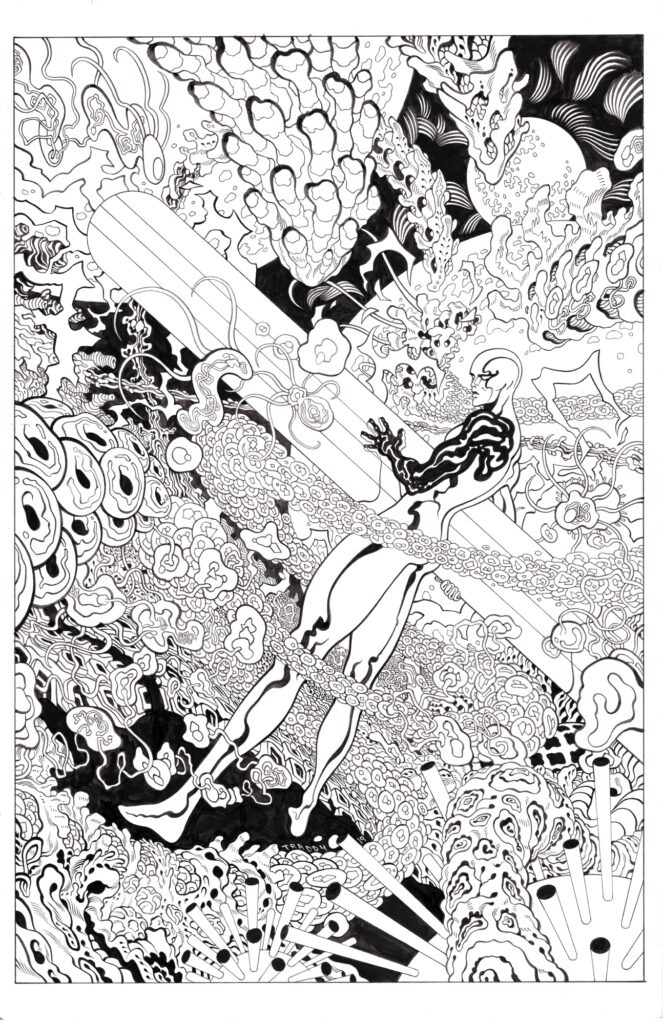
Nostalgia
People want things that make them feel good and remind them of the “good old days.” Vintage art is often driven by nostalgia and historical significance, with artistic quality often coming afterward. Not to say that there’s not amazingly illustrated art out there, there is and lots of it, but Vintage comics were primarily aimed at children. Quantity and deadlines were favored over quality oftentimes. The art buyers are often those “bought them off the rack” and read these books until they fell apart in their beds when they were young.
Modern art on the other hand is mostly marketed towards adults. As the digital age added countless new methods of entertainment for children, comics have fallen out of favor and become much more of an adult activity. All the newer art being sold today is with little nostalgic attachment. I’m sure in 20 years some nostalgia will form for some younger people currently into comics, however currently modern art is appreciated and collected usually from an adult perspective. So if modern collectors aren’t satisfying a nostalgic what are they looking for?
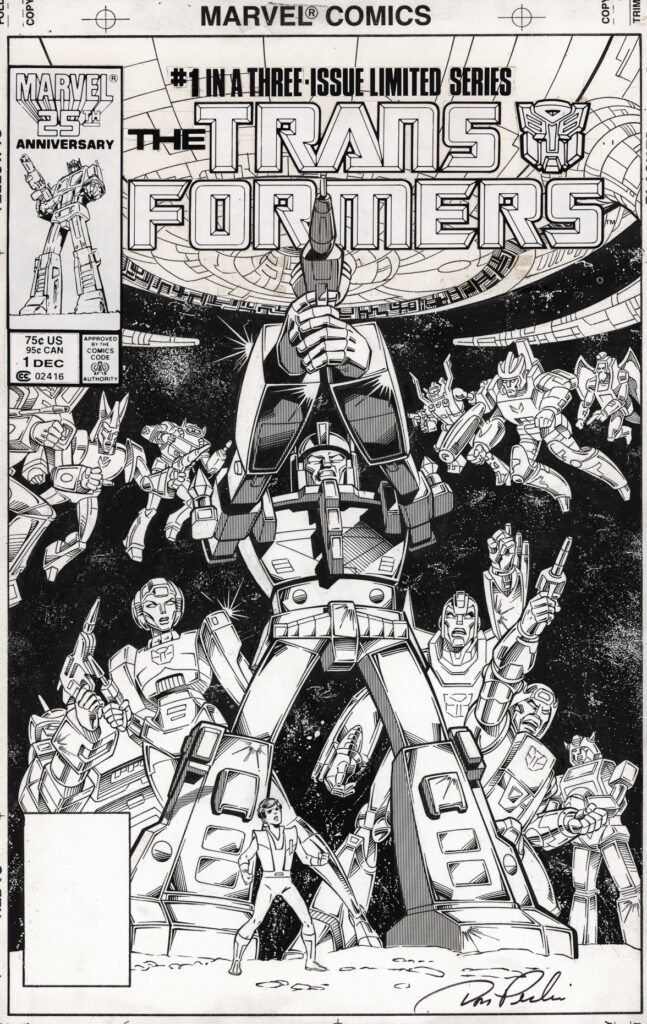
Quality
Today’s art tends to be of higher quality as a whole. Now I am not saying vintage art is of poor quality. Some of the best art ever is in this period. Also it cannot be understated that the present is built on the past. Today’s artist would never have developed quite the same skills if they didn’t have the past artists to emulate and study. That being said the overall level of skill in modern comics is a cut above the overall output of vintage artists.
There is a lot of poor vintage art. There is still some poor art that is produced these days, but in general anyone who wants to get into the industry must have a tremendous level of skill to get a gig. It’s tough to get a job as a new comic artist if your illustration skills are not very very good.
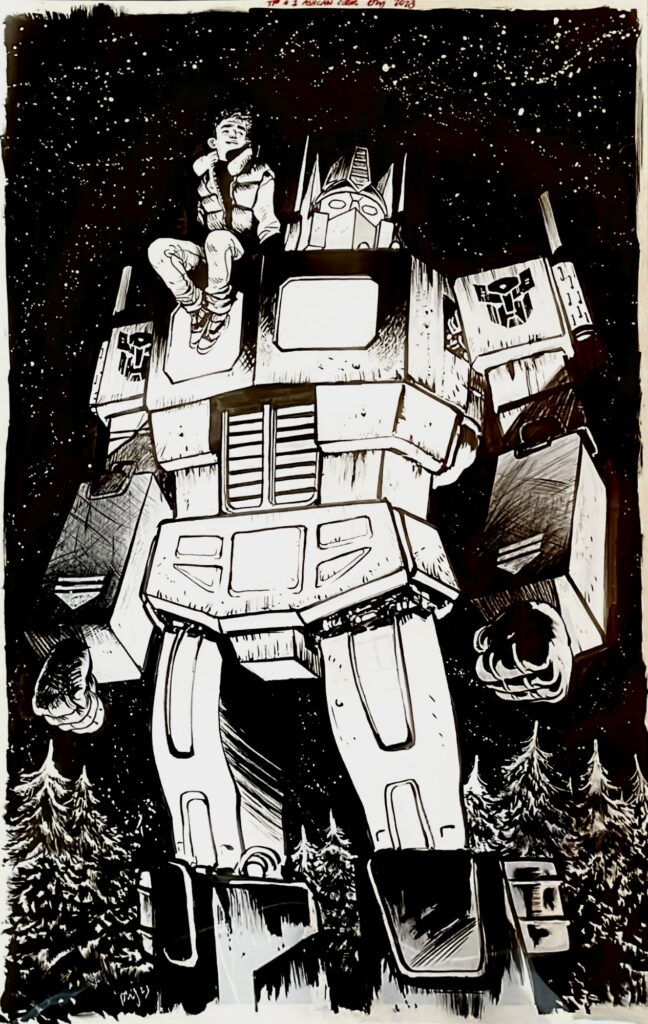
Significance – Its all been done before
Something that happens as time passes by, it is harder to come up with new ideas. Much sequential art has been recreating the trope of the costumed hero for 80 years. For many the great stories and classics have already been told. Especially if we are talking big two art. Much of the best art and stories being done today is in creator owned stories, although comics are very much a super hero dominated industry still, at least in the US.
Imagine if the silver age of Marvel Comics never happened. We would literally be living in a different world. The impact of these stories cannot be denied. Whether it is Golden Age Horror, the magic of silver age Marvel or the realism brought to comics in the Bronze Age, this art certainly has significant importance in the hobby and to general pop culture.

Process
As computers took over the industry, the way art was created and produced itself changed. Pretty much everything was done on the actual art board in the earlier era. Pages were pencilled and inked. Word balloons were done by hand. Logos were created and pasted on the board. You had everything in that one piece. Not today. The digital era has made much of the process take place virtually. There are almost never word balloons on art and logos are digital. More and more art is created partially digitally if not fully. Pencil and ink art doesn’t exist at all in some cases. Sometimes pencils and inks may both exist, but are done on separate boards. Today’s process turns off a large percentage of vintage collectors. They simply don’t want art in the fashion it is produced today.

Distribution of Art
Vintage art was distributed in many ways. Sometimes it was given away, sometimes it was sold and sometimes it was stolen. Some of it was thrown away, lost or destroyed. It simply had minimal value at the time. Often times collectors may not know if a piece of vintage art still exists.
Modern Art almost always still exists as it had known value. Sometimes an artist may give art away as a gift but usually it is sold either directly or through a rep. If you are willing to do the work you can track down almost anything you could want.
Condition
Before art was worth anything it was thrown away in droves and not cared for. This led to a lot of vintage art having various condition issues. As art use to have almost no value and was not cared for condition issues are common and therefore part and parcel of vintage art. Tape, tears, fading inks, foxing and yellowing are often present on vintage art. Sometimes poor inks were used and have faded over time. For modern art on the other hand desirability was already established so most artists took at least moderate care of their work. There are some modern collectors who view condition as an issue while vintage collectors pretty much don’t care about condition unless it’s very damaged.
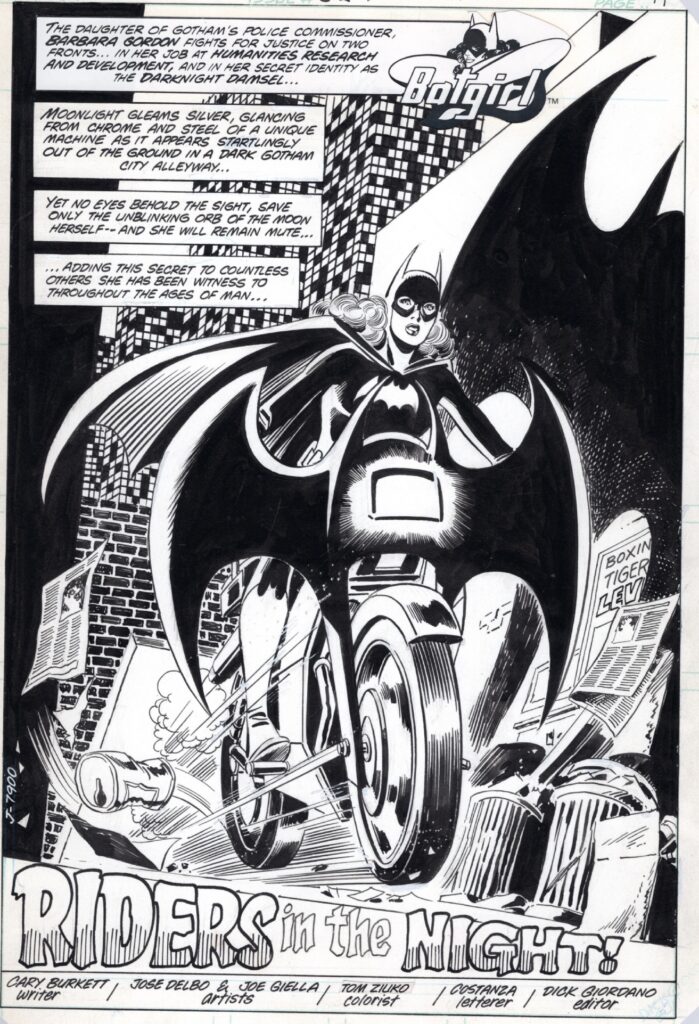
The Costumed Hero Trope
I wanted to finish in an area where both sides tend to be in massive agreement. This hobby is all about the “superhero.” We are talking specifically about US art here. Although much amazing material has been produced in a variety of genres, US sequential art is still pretty much synonymous with superheroes, and this applies to both vintage and modern art equally. Vintage collectors have their Conan and Pre Code Horror. Modern Collectors have their Walking Dead and many other wonderful indie comics. But both sides main love is in the superheroes, they just can’t agree who drew them better, but we can agree they are awesome. People love Spider-Man when he is drawn by Steve Ditko, John Romita, Todd McFarlane or Ryan Stegman…the love for these heroes is timeless!
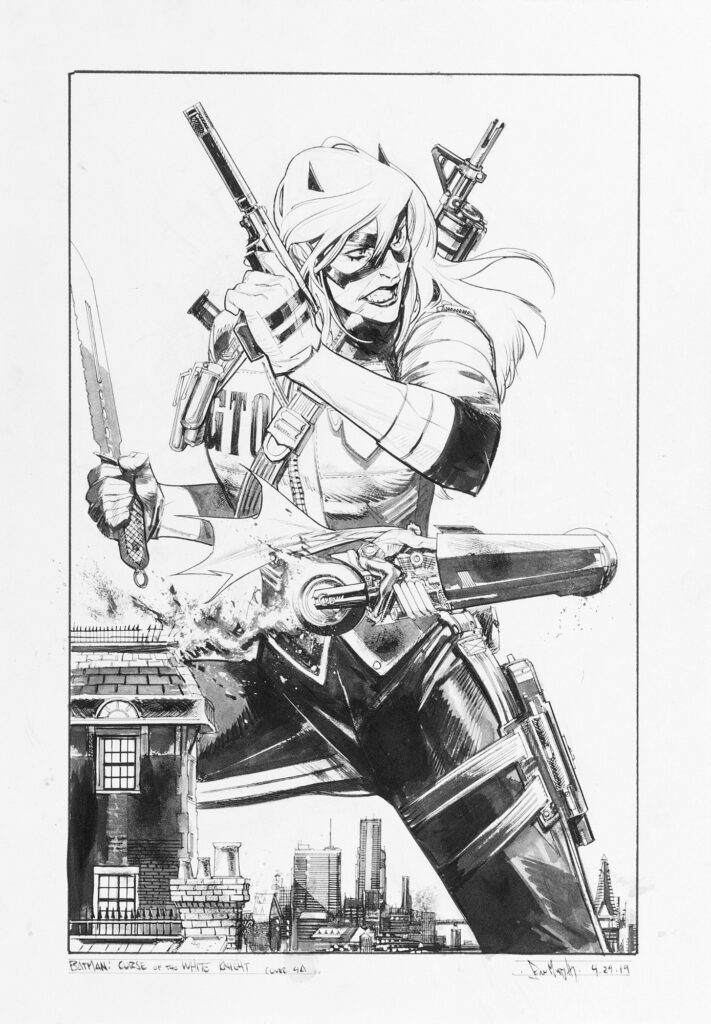
Can’t we all just get long?
So as you can imagine, Vintage collectors tend to be older and don’t read comics much if at all anymore. There is nothing left to see for them and they balk at pages not having words balloons any longer, let alone digital art creation. They are in shock every time a modern page goes for a big price. Modern collectors on average are younger and voracious readers of current books. If we are talking US market they probably also read manga and maybe even some European books(Ask a collector over 60 in the US who Goku or Eren Yeager is and you will almost always get a blank stare). They tend to view a lot of older art as bland and boring and are looking for quality stories with high quality art.
Now, there are collectors who do not discriminate and collect both old and new art(myself included). Even then however these collectors usually have their preferences. As always collect what you love. Some people could never buy a piece in very poor condition. Fine. Some people will never touch a piece of art that is 100 percent digital. That’s understandable. Figure it out for yourself what you can accept and can’t. Buy what you love, but no need to put down others tastes.
We all love the same thing but were just exposed to different parts of it. I always say it is good we all collect different things, or else this hobby would get pretty boring.
Hopefully this article bridged the gap a bit and helped collectors with a vintage preference understand modern collecting and vice versa. A whole book could be written on this subject and as I wrote this article it got longer and longer and I thought of more and more subjects to talk about and just had to stop or it would have never been complete! Never stop learning and growing in this hobby. Appreciate the art form and everything this hobby offers. Happy collecting!

